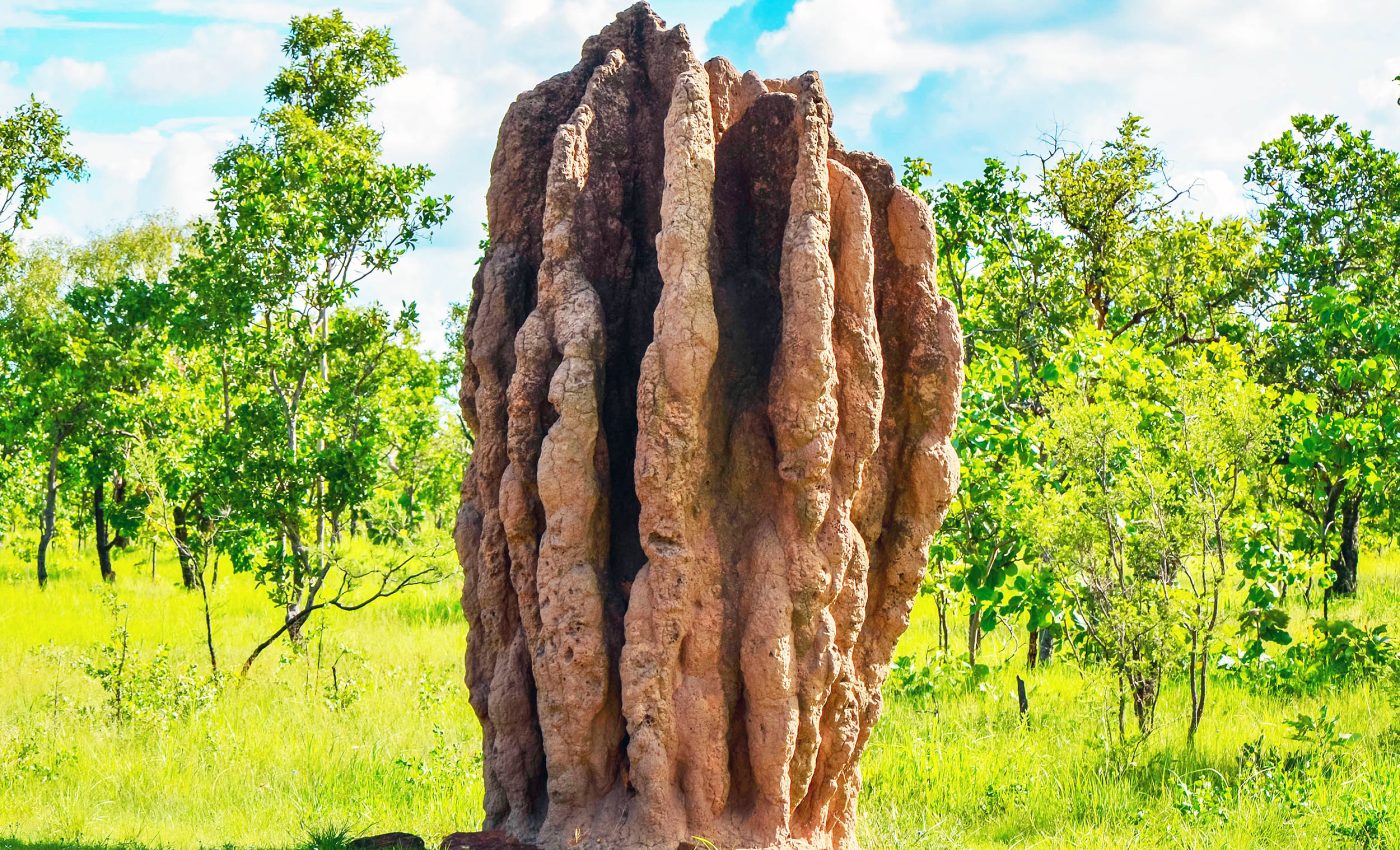
Enormous desert structure built by insects is 4,000 years old and can be seen from space
On the scrub‑covered plains of northeastern Brazil, millions of brown cones rise just high enough to catch the late‑day sun. They look like random piles left by passing farmers and, until recently, they fooled researchers too.
Satellite images finally revealed their true extent: an earthen metropolis spread over roughly 88,000 square miles – about the size of Great Britain – and built grain by grain by termites no longer than a fingernail.
Most ecosystems show traces of the animals that shape them, yet few match this scale. The Syntermes dirus termites have pushed more than 2.4 cubic miles of soil to the surface, assembling around 200 million mounds without a single blueprint.
Only when scientists from the University of Salford and the Universidade Estadual de Feira de Santana (UEFS) began pairing drone flights with ground surveys did the pattern emerge.
Tiny, silent architects of the caatinga
The caatinga – a seasonally dry forest shot through with thorny shrubs – offers slim pickings.
Rain arrives in bursts, leaves fall fast, and food appears in scattered pockets. That scarcity has pushed S. dirus to become subterranean engineers.
While foraging, they carve tunnels just beneath the surface, shoving spoil upward through temporary shafts. Each shaft becomes a cone about 8.2 feet high and 29.5 feet wide; over time those cones harden into permanent landmarks.
Unlike the tower‑like nests seen in Africa or Australia, these Brazilian mounds hold no royal chamber or nursery.
They are solid waste dumps – the visible residue of an underground traffic system optimized for hauling leaf litter home.
The termites stay hidden by day, sealing narrow access tubes until darkness brings cooler air and fewer predators.
Very, very old termite mounds
To work out when the first heaps appeared, researchers drilled cores from mound centers and dated mineral grains with optically stimulated luminescence.
Some cones formed 3,820 years ago; others are as ‘young’ as 690 years old. That makes them among the oldest termite structures on Earth, older than many stone monuments humans celebrate.
Every termite mound cone holds roughly 65 cubic yards of packed clay. Multiply that by 200 million, and the displaced soil rivals about 4,000 Great Pyramids of Giza – a statistic the team highlighted to put insect power in perspective.
Field crews could visit only a fraction of the cones, so the study turned to a modeling tool called MAXENT. By feeding confirmed mound locations into the algorithm, the scientists projected where similar terrain likely hosts more cones.
Follow‑up hikes backed the prediction: the grid stretches for hundreds of miles, yet human activity barely nicks it because the acidic clay is poor farmland.
Decoding the perfect spacing
Stand atop one termite mound, and another sits about 65 feet away in any direction – a pattern called ‘over‑dispersed’.
To discover whether rival colonies enforced such order, the team introduced termites from neighboring heaps to one another.
No hostility surfaced unless the insects came from sites roughly 31 miles apart, implying that spacing is not a product of territorial squabbles.

Instead, self‑organization explains the grid. Removing soil is costly, so pushing spoil to a single point and never digging there again saves energy.
Over centuries, the termites created a lattice with an average density of 4,660 mounds per square mile. Chemical signals probably keep the lattice intact; pheromone trails guide workers through labyrinthine tunnels to food, to waste cones, and back again without traffic jams.
Life underground in a termite mound
Beneath each cone lies a central artery that branches like a tree root. The network lets colonies reach new leaf drops without surfacing midday in brutal heat.
By night, workers nibble dry leaves, ferry them below, and seal the entrance behind them. The cones themselves do nothing more than hold discarded clay, yet they mark the tunnel map for generations.
Parallels pop up across harsh landscapes. Naked mole‑rats in East Africa build similar subterranean webs to chase tubers.
North American gophers leave spoil piles comparable in form, though smaller in scale. In every case, sparse resources push small creatures to redesign the very ground they inhabit.
Understanding termites – the basics
Termites might be tiny, but they play a massive role in shaping ecosystems. These insects live in highly organized colonies, sometimes numbering in the millions, and they divide their tasks among workers, soldiers, and queens.
You’ll often find them in warm, humid environments where they chew through wood, dead plants, and even dung.
While we tend to associate termites with destruction – especially when they invade homes – they actually help recycle nutrients back into the soil, keeping forests and grasslands healthy.
What’s fascinating is how they build and communicate. Termites use chemical signals to coordinate everything, from feeding to defending their nest.
Some species even construct towering mounds that regulate temperature and humidity through intricate tunnel systems – essentially natural air-conditioning.
So yes, while they might give homeowners nightmares, termites are more than just pests. They’re nature’s quiet architects, shaping the world one bite at a time.
Lessons from a living city
The Brazilian grid shows that big construction does not require big bodies or even central planning.
Simple rules – dig, dump, move on – run through countless termite lifetimes and shape an entire biome. When food is scattered and rain unreliable, efficiency wins.
The cones stand as silent mile‑markers of that principle, reminding visitors that the world’s grandest civil engineers sometimes weigh less than a paperclip.
The full study was published in the journal Current Biology.
—–
Like what you read? Subscribe to our newsletter for engaging articles, exclusive content, and the latest updates.
Check us out on EarthSnap, a free app brought to you by Eric Ralls and Earth.com.
—–













